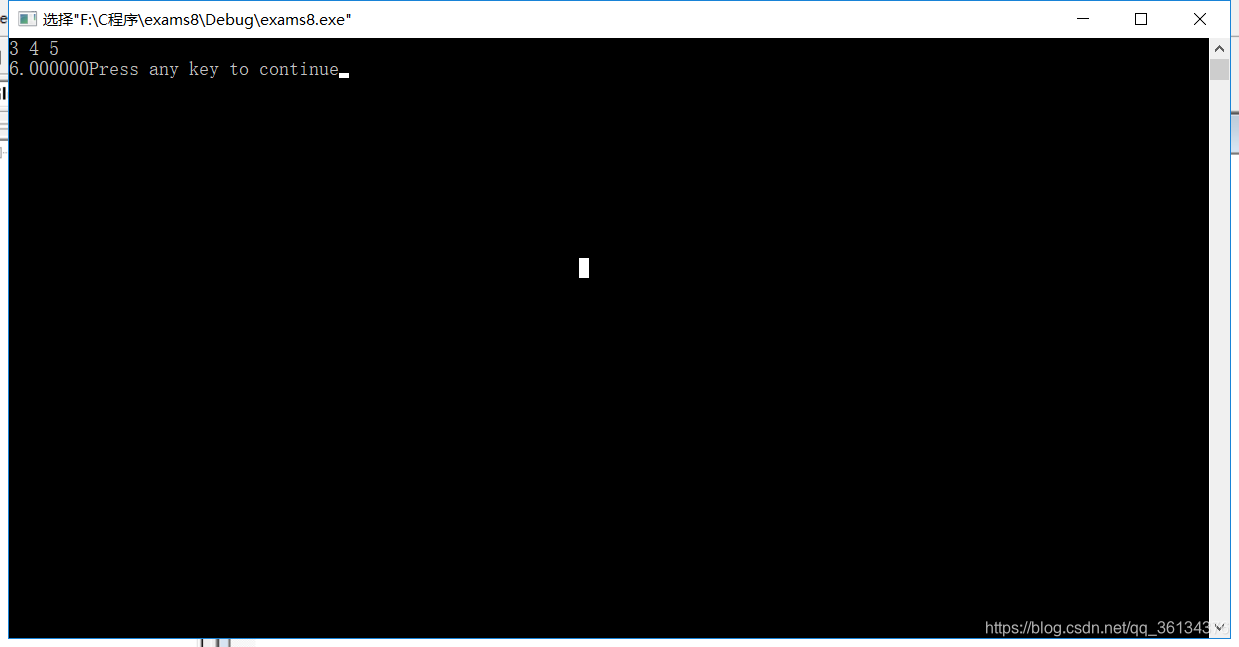C语言-求三角形面积
本文共 301 字,大约阅读时间需要 1 分钟。
一、代码
//三角形面积:(海伦公式)(p=(a+b+c)/2)//S=sqrt[p(p-a)(p-b)(p-c)]#include#include void main(){ double a,b,c; double p; double s; scanf("%lf%lf%lf",&a,&b,&c); if((a+b>c)&&(a+c>b)&&(b+c>a)){ p=(a+b+c)/2; s=sqrt(p*(p-a)*(p-b)*(p-c)); printf("%lf",s); } else printf("无法构成三角形"); }
二、结果

转载地址:http://xbch.baihongyu.com/
你可能感兴趣的文章
Node.js高级编程:用Javascript构建可伸缩应用(1)1.1 介绍和安装-安装Node
查看>>
nodejs + socket.io 同时使用http 和 https
查看>>
NodeJS @kubernetes/client-node连接到kubernetes集群的方法
查看>>
NodeJS API简介
查看>>
Nodejs express 获取url参数,post参数的三种方式
查看>>
nodejs http小爬虫
查看>>
nodejs libararies
查看>>
vue3+element-plus 项目中 el-switch 刷新后自动触发change?坑就藏在这里!
查看>>
nodejs npm常用命令
查看>>
nodejs npm常用命令
查看>>
Nodejs process.nextTick() 使用详解
查看>>
NodeJS yarn 或 npm如何切换淘宝或国外镜像源
查看>>
nodejs 中间件理解
查看>>
nodejs 创建HTTP服务器详解
查看>>
nodejs 发起 GET 请求示例和 POST 请求示例
查看>>
NodeJS 导入导出模块的方法( 代码演示 )
查看>>
nodejs 开发websocket 笔记
查看>>
nodejs 的 Buffer 详解
查看>>
nodejs 的 path 模块详解
查看>>
NodeJS 的环境变量: 开发环境vs生产环境
查看>>